A Brief History Of Mediaș/Mediasch, Transylvania, Romania
Mediaș (known in Standard German/Hochdeutsch as Mediasch, historically also as Medwisch, and in the Transylvanian Saxon dialect as Medwesch or Meddesch respectively) has been one of the most important urban settlements in southern Transylvania and one of the most important historical towns of the Transylvanian Saxons (known in German as ‘Siebenbürger Sachsen‘, i.e. Seven Citadels’/Castles’ Saxons, literally, although, in historically accurate regards, they do not have a direct lineage to the Saxons in the three Saxon lands in Germany, i.e. Lower Saxony/Niedersachsen, Sachsen-Anhalt or Saxony/Freistaat Sachsen, but are rather more Luxembourgish in origin, though not exclusively as such). It is situated in Sibiu County (Kreis Hermannstadt in German), in the proximity of the Târnava Mare (known in German as Große Kokel), and, after the county seat of Sibiu/Hermannstadt, it is the second most populous town of the county. With its beautiful historical architecture and wonderful surrounding nature, Mediaș/Mediasch is a distinctive well preserved medieval gem of Transylvania and of Romania in general. The town is composed of the main locality and the neighbouring village of Ighișu Nou (known in German as Sächsisch-Eibesdorf, i.e. Saxon yew’s village, literally).
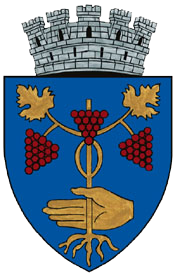
The coat of arms of the Romanian town of Mediaș/Mediasch, southern Transylvania, Romania. Note the grapes and the wine leaves here as they denote the renowned good quality wine of the town. Image source: Commons Wikimedia
The etymology of the town’s name can be explained as follows: it stems from the Hungarian word ‘meggy’ meaning ‘sour cherry’. The Romanian name of the town originated in and was influenced by the German one which originally stems from Hungarian, being Medgyes (possibly in connection to a Szekler tribe of the 9th century; the Szeklers are a Hungarian-speaking minority in Transylvania but form majorities in two counties in eastern Transylvania, namely Harghita and Covasna).
The area of the town has been inhabited since Neolithic times. In Antiquity, on the site of the present-day town of Mediasch, there was a roman castrum known as Castrum Media. After the Hungarian conquest of the Panonian basin during the Early Middle Ages and the incorporation of Transylvania into the medieval Kingdom of Hungary, the Hungarian monarchs, starting with Géza II, invited Western European German-speaking colonists in Transylvania (these colonists being subsequently known as Transylvanian Saxons or Siebenbürger Sachsen in German, as previously mentioned in the introductory paragraph). These Western European German-speaking colonists stemmed from the Rhineland-Mosselle river valleys, most notably from the present-day Grand Duchy of Luxembourg and its adjacent territories. The town of Medias/Mediasch was founded in 1146, a year matching the standard timeline given for the arrival of the first wave of Transylvanian Saxon colonists in Transylvania. i.e. the 1140s and 1150s respectively. However, the first documentary mention of the town dates back to 3 June 1267, the urban settlement being then recorded as Mediesy (an obsolete/old Hungarian form of the contemporary name of the town). From 1289 to 1308, the area of the subsequent town of Mediaș/Mediasch was referred to as ‘Terra Medies’. In 1359, it received the status of civitas (i.e. town in Latin). The town and its neighbouring area are part of the traditional etnographic area known as Weinland (i.e. the land of wine, renowned regionally for its good quality wine).
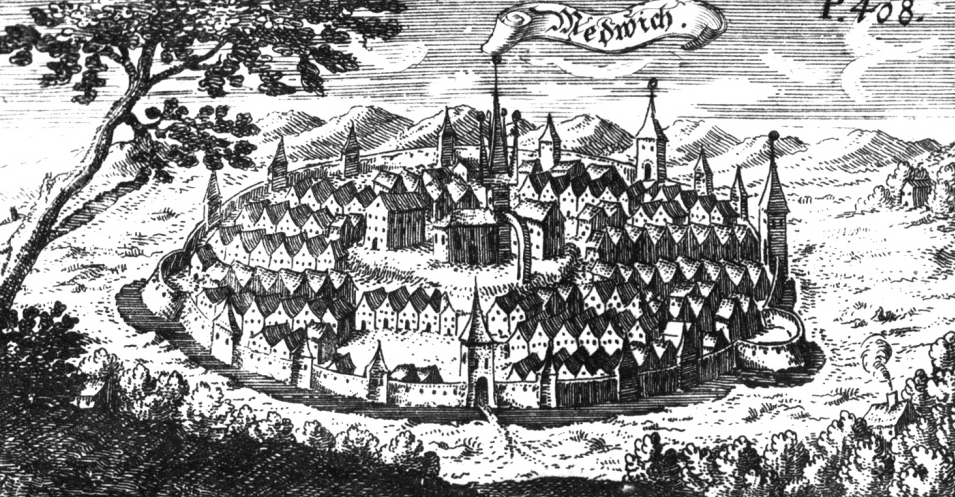
The Transylvanian Saxon fortified town of Mediaș/Mediasch in 1666 (here described under its Transylvanian Saxon name (albeit an obsolete/old form) on the flying banner in the middle, namely Medwich). Image source: Commons Wikimedia
The history of the town during the High Middle Ages has been profoundly marked by the arrival of the Transylvanian Saxons who had fortified this urban settlement, as others of its types across southern, south-eastern, and north-eastern Transylvania in the prospect of foreign invaders from Asia, most notably Cumans, Pechenegs, Tatars or Mongols (and, later on, the Ottoman Turks).
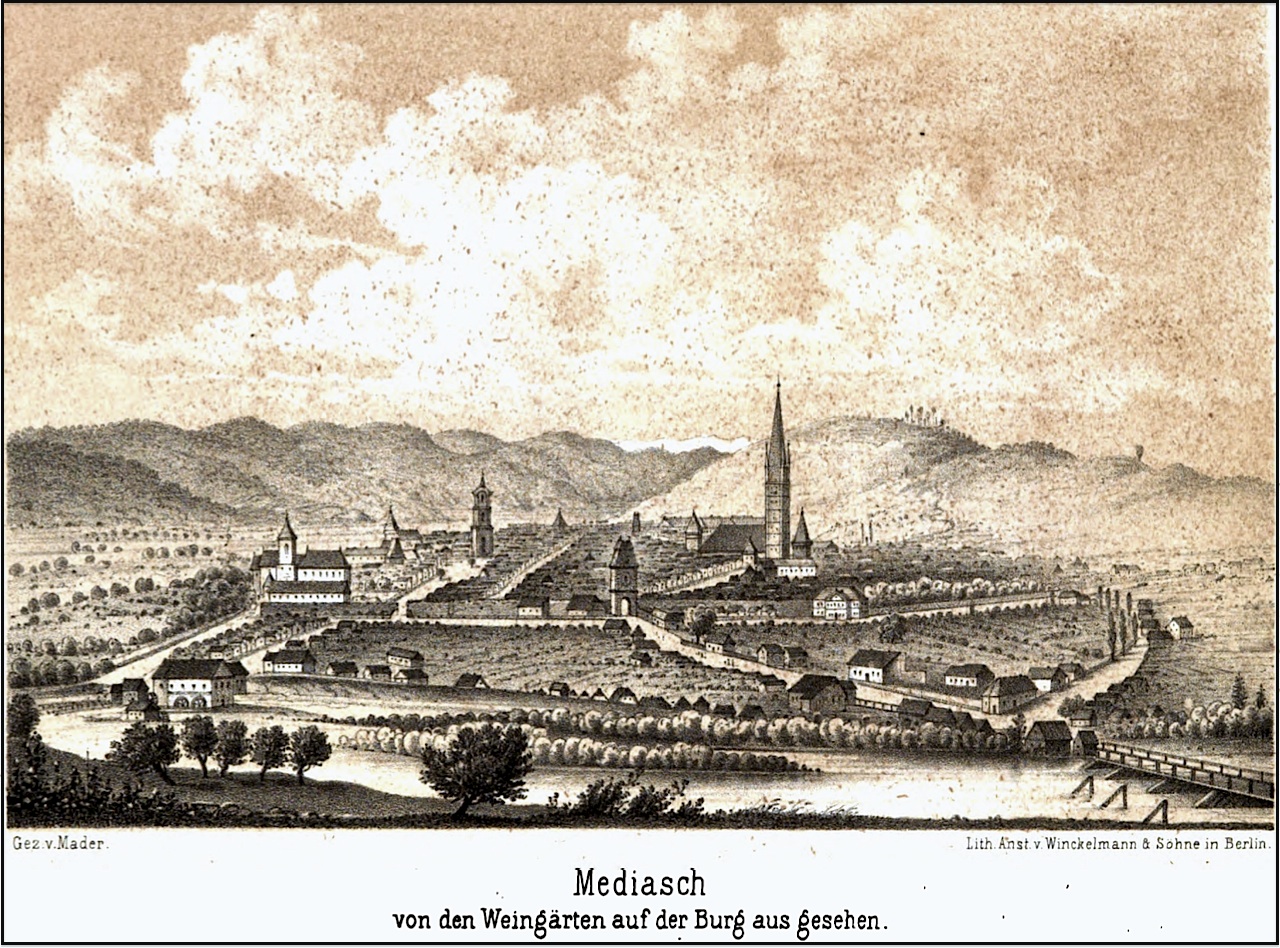
The town of Mediaș/Mediasch as seen from the vineyards in 1662. Image source: Commons Wikimedia
Along the passage of time, the town became more and more economically developed as the Transylvanian Saxons also had another main task to enhance trade and urbanisation in the region of Transylvania throughout the High Middle Ages, aside from mining (especially in the north-east of Transylvania, namely in the Bistritz/Nösnerland/Nösnergau region) protecting the easternmost borders of the Kingdom of Hungary (initially being aided in this respect by the Teutonic Knights which had briefly settled in the region as well). Fast forward, as the Modern Age was gradually coming to an end, industrialisation was also introduced in the town (along with a professional school for agriculture, Ackerbauschule as it is known in German). In 1881, the Karres factory was established, a factory which made various leather products. During the late Modern Age and as part of the Romantic revolutions of 1848. the town is well known for the remarkable historical figure of Stephan Ludwig Roth (a local high school bears his name to this day) who was a national hero for both the Transylvanian Saxons and the Transylvanian Romanians during the turbulent time of the 1848 Hungarian revolution.
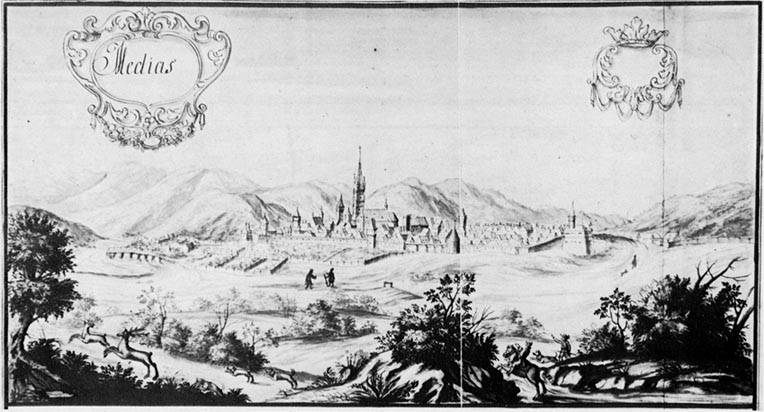
The Transylvanian Saxon fortified town of Mediaș/Mediasch as seen in 1735. The high tower in the background belongs to the Saint Margarethe Church (or Margarethenkirche as it is known in German), an imposing historical landmark of the town to this day. Image source: Commons Wikimedia
After the end of World War I, along with the entire region of Transylvania, Mediaș/Mediasch became part of the enlarged Kingdom of Romania. After the end of World War II and the forceful downfall of monarchy in Romania along with the illegal creation of the communist republic (i.e. the Romanian People’s Republic), the population of the town increased significantly from 1948 to 1977. After the 1989 Romanian Revolution, the population of the town started to gradually decline. In terms of its local economy, its main industries were and still are those of food (particularly revolving around the well known Sibiu Salami and pate, on a personal note the latter being my all time most favourite one, naturally), windows and various glass products, and methane gas (the town is actually situated on the largest methane gas field across Romania).
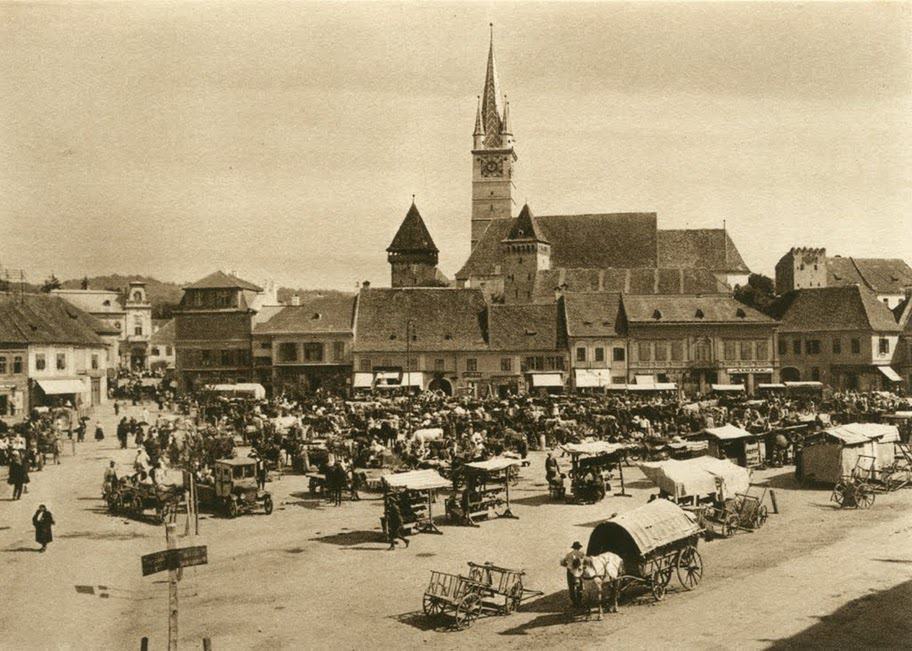
Mediaș/Mediasch, as photographed by German photographer Kurt Hielscher in 1933, during the interwar period, Image source: Commons Wikimedia
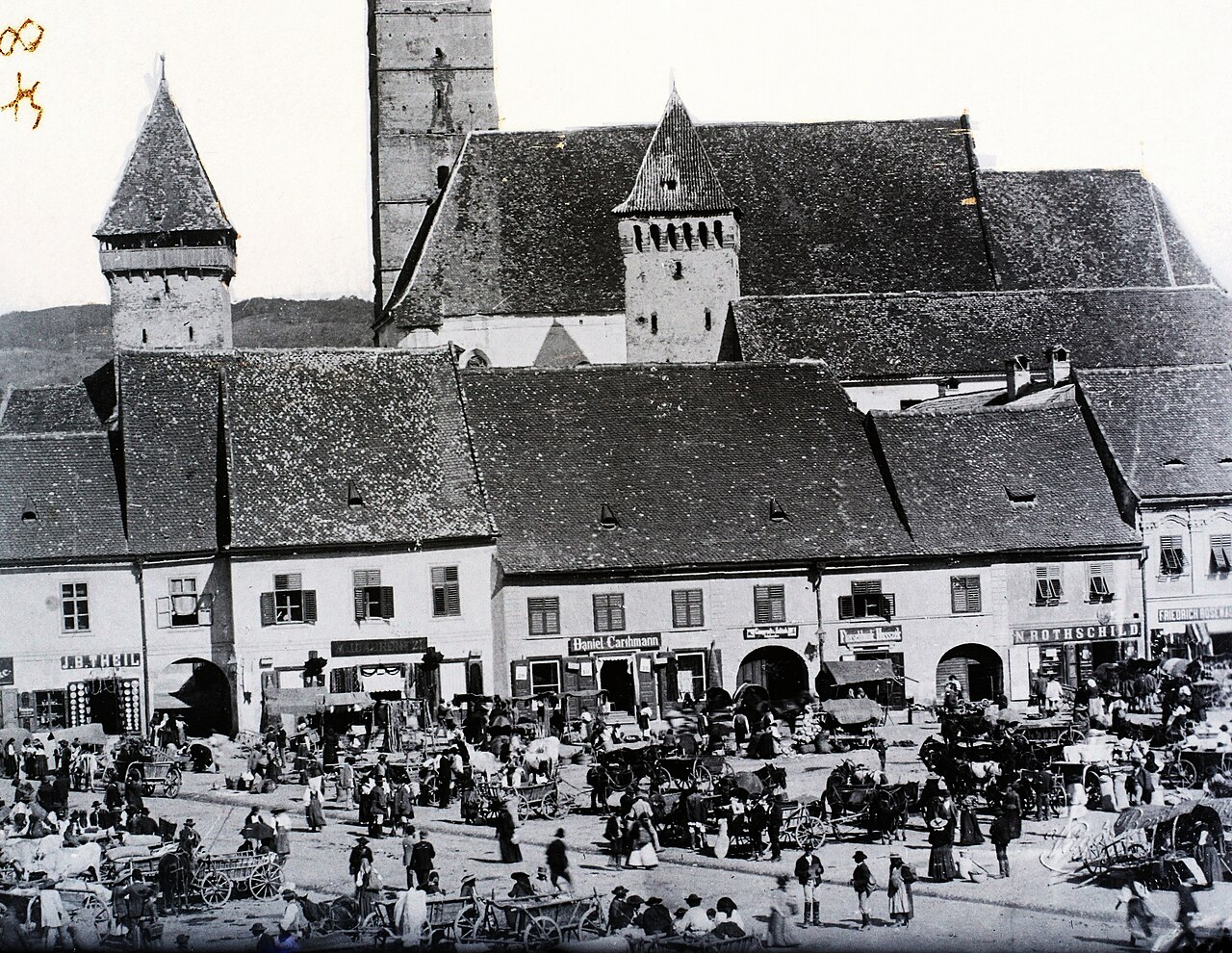
The town centre of Mediaș/Mediasch, as seen in 1900, at that time part of Austria-Hungary, more specifically part of Transleithania or the Lands of the Crown of Saint Stephen. Image source: Commons Wikimedia
Nowadays, as it is the case of many other towns and cities throughout Romania, Mediaș/Mediasch has been experiencing a population decline. In its recent past, regarding sports, the town was known for its moderately successful football club C.S. Gaz Metan Mediaș which almost made it to the 2011–2012 edition of UEFA Europa League, before being eliminated by FK Austria Wien in the play-off round by a margin of only one goal (overall score 2–3).
In terms of its well preserved and beautiful medieval fortifications, one of the most notable of its kind is the Forkesch Tower (which is my personal favourite). Legend has it that the name of the tower comes from the former leader of the armourers’ guild called Forkesch You can watch the beautiful medieval fortifications of the town well lit during a rainy evening below:



